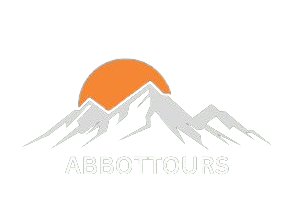Start an exciting trip through the stunning beauty of Morocco. Every tourist will find a tapestry of different landscapes, lively culture, and deep history. Morocco has so many interesting things to do, from the busy streets of Marrakech to the quiet beaches of Essaouira. This all-inclusive travel guide shows you the most beautiful places to visit, exciting things to do, interesting cultural facts, and useful advice you need to plan an amazing trip to this North African gem.
Explore Marrakech, the beating heart of Morocco. Its busy souks, ornate palaces, and lively streets will immerse you in the country’s rich history. In the Rif Mountains, Chefchaouen has streets that are painted blue. Walk through them and get lost in the city’s peaceful atmosphere. Visit Fes el-Bali and the busy markets in Fez, which is a live tapestry of history. Then, take a break in Essaouira, a beach town with a laid-back vibe, where you can do water sports and learn about art.
Morocco has a lot of exciting things to do, like hiking in the High Atlas Mountains, sandboarding in the Sahara Desert, and camel riding on the golden sands. Immerse yourself in the lively souks and shops and enjoy the cultural and artistic treats that Morocco has to offer. Follow Moroccan manners and customs, enjoy delicious food, and pay attention to useful travel tips for a smooth trip. Go on an adventure you’ll never forget in Morocco, where old customs and new wonders come together to create an experience like no other.
Unveiling Spectacular Destinations
Marrakech: The Heart of Morocco
The Djemaa el-Fnaa square in Marrakech, which is a lively mix of old and new, invites tourists to fully enjoy their time there. Come evening, the square comes to life with singers, storytellers, and tempting food stands, giving you a stunning look into Moroccan culture.
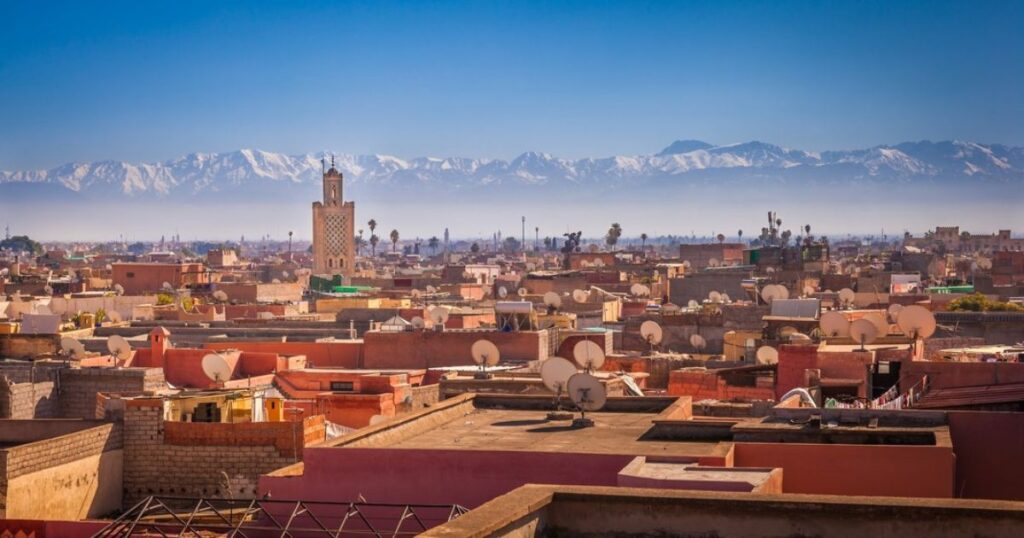
Explore the beautiful buildings in Marrakech, such as the famous Koutoubia Mosque, the luxurious Bahia Palace, and the Saadian Tombs, which are a secret gem. These places show off the city’s rich Islamic history and take you on an interesting trip through its long history.
You should check out the busy medina, which has winding streets that lead to secret treasures and markets full of spices that smell great. Enjoy the historic area of Marrakech, which is full of things to see and do. Around every corner, there is a new adventure waiting to be found.
Chefchaouen: The Blue Pearl of Morocco
The beautiful blue scenery in Chefchaouen, which is known as the “Blue Pearl” of Morocco, draws tourists in. The medina’s streets are like a maze, and around every corner, you can see a different shade of blue, making a beautiful visual fabric.

Enjoy the busy buying area in Chefchaouen, which is full of stalls selling hand-painted pottery, colorful Berber carpets, and intricate leather goods. Every item you buy will remind you of your time in this one-of-a-kind and beautiful city.
In Chefchaouen’s beautiful surroundings, you can find both peace and excitement. You can go hiking in the Rif Mountains and enjoy stunning views of the blue city tucked away in the greenery, or you can visit the historic Kasbah and learn about the area’s rich cultural history.
Fez: A Living Tapestry of History
Fez is the cultural center of Morocco and welcomes visitors to learn about its long past and lively traditions. Fes el-Bali is a UNESCO World Heritage Site with streets that are very confusing. The city was built in the 8th century and has amazing old architecture and busy markets.

Explore the beauty of Fes el-Bali’s architecture, from the intricate features of Bou Inania Madrasa to the historical importance of Al-Attarine Madrasa and the grandeur of the Kairaouine Mosque. As you walk through the small streets, take in the lively energy of the medina and enjoy the many sensory treats that are available.
Discover the traditional crafts of Fez, such as the tanneries of Chouara that are hundreds of years old and the skilled workers who make ceramics, leather goods, and detailed tapestries. Outside of the medina, the Merenid Tombs and the Nejjarine Museum of Wooden Arts & Crafts are worth a visit because they show Fez’s artistic history.
Essaouira: Tranquility by the Sea
Essaouira, which is lovingly called Morocco’s “Windy City,” is a peaceful coastal paradise full of sun, sand, and cultural charm. The golden beaches and gentle waves are great for resting or doing exciting water sports like windsurfing and kitesurfing while the ocean breezes keep you cool.
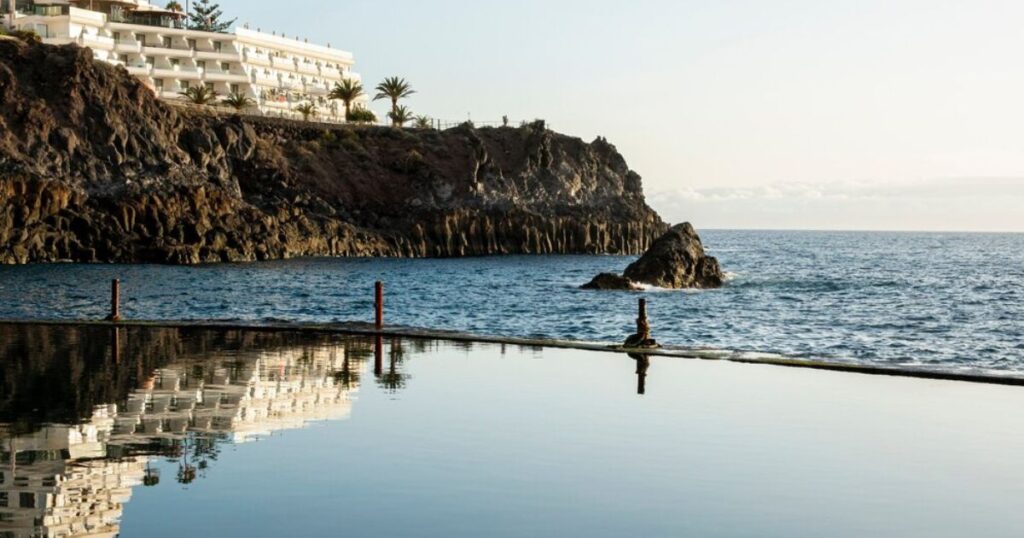
Explore the beautiful Essaouira medina, which is known for being easy to get around on foot and full of handmade gifts. As you walk through the maze-like alleys decorated with bright Berber rugs, pottery, and woodwork, you can enjoy the calm atmosphere and help local artists.
Explore Essaouira’s historical charm outside of the medina. From the Essaouira Skala, you can see the whole city and the Atlantic Ocean. Mogador Island has a fortified history that you can see on a visit. You can also check out Thuya wood workshops and enjoy fresh seafood dishes that reflect the city’s coastal bounty and foreign influences.
Merzouga: Gateway to the Sahara
Merzouga, which is on the edges of the Erg Chebbi dunes, is a beautiful place to start a trip in the Sahara Desert. The famous camel rides through the tall sand dunes can last anywhere from a few hours at sunset to several days. They are a peaceful way to experience the desert’s timeless beauty.

Enjoy the stunning sunsets that fill the sky with bright shades of orange, red, and purple, making for memorable scenes against the golden sands. When it gets dark, get away from the city’s bright lights and enjoy stargazing, where the vast sky shows you the wonders of the universe.
Discover the culture and natural beauty of Merzouga. Traditional Berber desert camps offer a unique connection with nature, and exciting 4×4 adventures take you through hidden valleys and help you find fossils from long ago. You can talk to people who live there, look around shops that sell desert treasures, and learn about how people live in the desert by going to the town.
Thrilling Activities for Adventurers
Hiking in the High Atlas Mountains
In Morocco’s High Atlas Mountains, hikers can start an unforgettable trip in a place with dramatic landscapes and a rich Berber culture. Trails for all skill levels, from easy hikes that are good for families to difficult summit treks, mean that every traveler who wants to conquer this beautiful land can find an exciting journey.
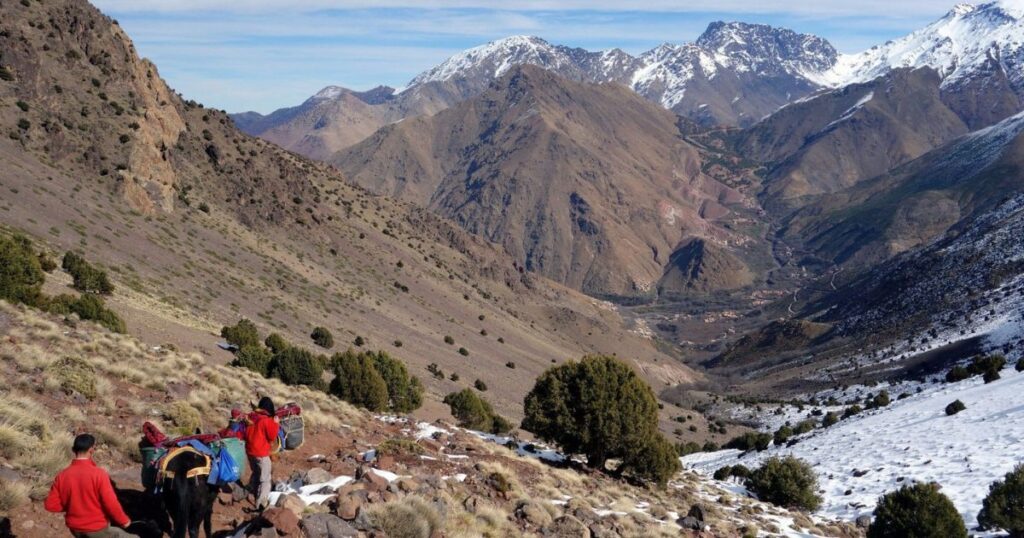
North Africa’s highest peak, Jebel Toubkal, can be reached on a rewarding two-day hike through a variety of landscapes that will give you a sense of success and breathtaking views. If you want to enjoy the trails without any worries, choose a guided journey. Local guides will share information about the history, culture, and many plants and animals that live in the area.
As you go up in the mountains, the views will keep changing, from green valleys and rushing rivers to snow-capped peaks that reach the sky. Immerse yourself in Berber culture by visiting traditional towns, being treated with warm hospitality, and seeing how intricately Berber rugs are made while taking in stunning views.
Researching trails, booking guides and lodging ahead of time, and packing essentials like sturdy hiking boots, clothes that let air flow, and lots of water are all good ways to get ready for your journey. Do not leave any trash behind to show that you care about the environment and protect the fragile mountain ecosystem. Not only is hiking in the High Atlas Mountains hard on the body, but it’s also a deep journey of finding and connection with nature.
Sandboarding in the Sahara
Sandboarding in Merzouga is a thrilling way to see the Sahara Desert. Going fast down endless sand dunes will give you an energy rush like no other. Whether you’ve never been snowboarding before or are a pro, professional guides will make sure you have a safe and exciting time. They will also adjust the experience to your skill level so you can go at your own pace across the golden sands.
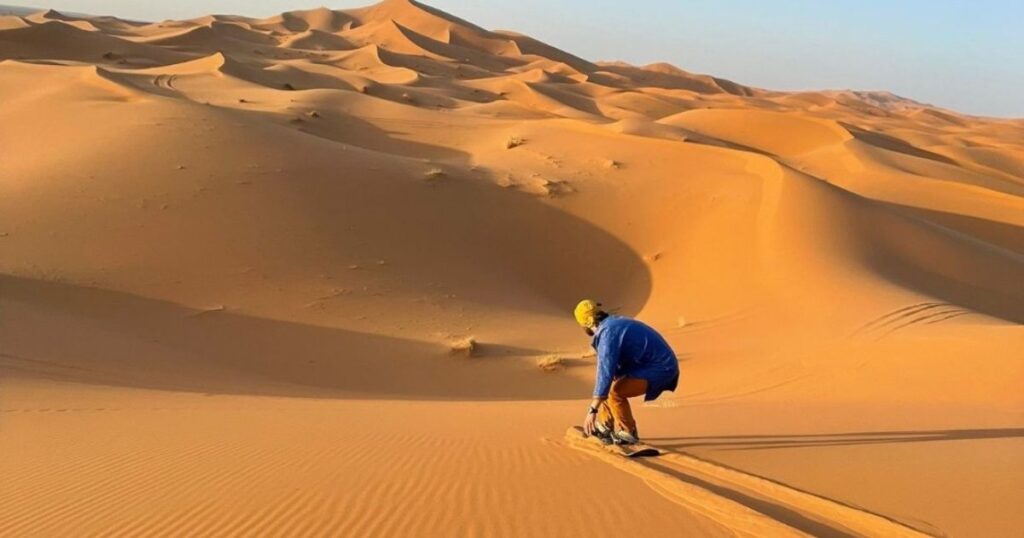
Most desert camps let you rent sandboards, so you don’t have to bring your own gear on your next trip. Wear comfortable clothes and shoes with closed toes that can handle sand. Also, don’t forget to bring sunscreen, sunglasses, and a hat to protect yourself from the intense desert sun.
Explore the different sand dunes in Merzouga. There are easy slopes that are great for newbies and steep slopes that are good for more experienced sandboarders. With help from a professional, you can pick the best dune for your skill level and comfort zone, making sure you have an amazing sandboarding adventure in the stunning Sahara.
Camel Trekking Across the Desert
On a camel trek through the Sahara Desert, you can experience the timeless beauty of Morocco’s most famous scenery in a way that you will never forget. There are different types of treks, from short rides at sunset to multi-day trips, so you can find one that fits your plan and level of interest.
Enjoy the warmth and peace of traditional desert camps, where you can spend the evenings under the stars, cooking tasty meals over open fires, and telling stories with other travelers. Spend some time in a place where time has shaped the scenery. Let the camels’ gentle sway and the wind’s whisper lead you.

You can walk along gently rolling golden dunes and watch the sun move across the sky, which is a hypnotic sight. As you travel, you will come across nomadic Berber villages. Learn about their unique culture and way of life while taking in the stunning desert scenery.
Before you go on your trip, make sure you pack the right things for the desert environment. For example, for the day, bring clothes that let air flow, for the nights, warm layers, and sun protection. During your walk, make sure you stay hydrated. Enjoy the unique experience of camel trekking in the Sahara as you make memories that will last a lifetime.
Exploring Vibrant Souks and Markets
You’re about to fall in love with Morocco’s lively souks. Each alleyway is a feast for the eyes, ears, and nose. Towering displays of spices, textiles, and handmade treasures that capture the essence of Moroccan craftsmanship will take your breath away with their rainbow of colors. As you walk through this busy market, let the rhythmic calls of sellers and the smell of exotic spices lead you.
Learn how to deal as you make your way through the souk’s maze-like streets. Talk to sellers in a nice way, starting with a low offer and working your way up to a price that works for both of you. Do this with a smile and a sense of respect. Some of the secret gems you can find among the stalls are hand-painted pottery, intricate textiles, fragrant spices, and traditional leather goods.
Besides being fun places to shop, the souks show how people live and what their culture is like in Morocco. While you’re not haggling, take a break and enjoy a mint tea at a nearby café. From there, you can watch the market go by and enjoy the lively atmosphere. You can walk through the maze-like alleys at your own pace and enjoy the thrill of finding cultural landmarks and secret corners.
As you walk through the souks, you can learn about Morocco’s long past and beautiful crafts. Look at the beautiful jewelry, woodwork, and textiles that are on show. Each one tells a story of traditional art and heritage. The souks in Morocco are a must-see for any tourist, whether they’re looking for souvenirs to remember their trip or just want to take in the lively atmosphere.
Embracing Moroccan Culture
Cultural Etiquette and Customs
If you want your trip to Morocco to go smoothly and with respect, you should follow local norms, starting with how you dress. In this mostly Muslim country, it is important to cover your shoulders and knees, especially in religious places. Women should wear clothes that are loose-fitting. When going to churches, it’s also important to dress appropriately. Both men and women should cover their arms and legs and take their shoes off before entering.
People from Morocco are known for being very friendly and welcoming. They often say greetings like “As-salamu alaykum” (peace be upon you). It’s normal to shake hands, but it’s important to be aware of gender norms when it comes to physical contact. For example, women shouldn’t touch men until they first offer their hand. According to local customs, it’s best to avoid public shows of affection and save them for private times.
To have a polite meal in Morocco, you need to know how to use table manners. People believe that the left hand is dirty, so always eat with your right hand. Also, be ready to share dishes that are given family-style. You can ask for cutlery if you need it, but many Moroccans prefer to eat with their hands. This is part of their culture, and it’s fun to share and try new things.
When visiting churches, it’s important to be polite and follow the rules about taking pictures. Even though some mosques let you take pictures, you should always ask first and be quiet to appreciate the building and the people who are praying. Tipping isn’t required, but it’s nice to show appreciation for good service, and people usually give small bills to servants, waiters, or guides.
Accepting the differences and habits of Moroccan culture makes the trip more enjoyable and helps you make friends with locals. Visitors should keep an open mind, be willing to learn, and be patient with life’s slower pace. They should also take advantage of the chance to learn about Moroccan customs. Tourists can get the most out of Morocco’s warmth, hospitality, and rich cultural history by respecting and learning about the local way of life.
Gastronomic Delights of Morocco
In Morocco, you can go on a culinary journey and enjoy a rich tapestry of tastes, colors, and smells that come from Berber, Arab, and European traditions. Enjoy traditional meals like tagine, which is slow-cooked meat with vegetables and spices, or couscous, which is a national dish that can be made with either sweet or savory ingredients. Don’t miss the chance to try unique treats like pastilla, a pastry filled with spiced meats and nuts that tastes great with both sweet and savory foods.
For something different, try b’steeya, Fez’s signature dish. It’s a savory pastry filled with tender chicken, caramelized onions, and spices that makes every bite a flavor burst. zaalouk is a creamy eggplant and tomato dip spiced with smoked paprika and cumin. It goes well with bread or crudités and has a smoky taste. Discover the secret of Marrakesh’s food with tanjia. Meat and spices are slow-cooked for hours in a sealed clay pot, making dishes that are incredibly tender and flavorful.
Chebakia are crispy cookies made with sesame seeds that are drizzled with warm honey for a nice contrast in texture and taste. You can eat a lot of fresh fruits, like melons, dates, and figs, or you can try traditional Moroccan desserts, like sfars and briouats, which can be filled with sweet or savory things. In a traditional tea ceremony, you can learn about the cultural importance of Moroccan mint tea while enjoying the sweet and refreshing drink that is poured from a height to make a foamy top.
Learn about the local practices and dining manners. For example, people usually eat with their right hand, and food is served family-style on big plates that everyone can use. Don’t just eat at tourist spots; try street food and small restaurants run by locals. Enjoy the trip and find new favorite dishes. The food scene in Morocco is full of traditions that are just waiting to be discovered. The country’s varied and tasty food is sure to delight tourists.
Practical Tips for Travelers
Visa Requirements and Entry Regulations
Before you start your trip to Morocco, you need to make sure you know what kind of visa you need. The standards can change depending on your nationality and how long you plan to stay. Use a trusted source, like the website for the Moroccan Ministry of Foreign Affairs or the embassy or consulate of your home country in Morocco, to find out what the specific requirements are for your country. To avoid delays, make sure you apply for your visa a long time before you need it. Processing times can vary.
Another important thing to think about is making sure your passport is still legal. Make sure that your passport has a few blank pages for entry stamps and is good for at least six months after the date you plan to enter Morocco. You might also want to buy travel insurance in case of an unexpected medical emergency, trip cancellation, or lost bags. This will give you peace of mind while you’re traveling.
Knowing how to swap money is important if you want to make purchases easily on your trip. The official currency is the Moroccan Dirham (MAD). Look up exchange rates and think about exchanging money before you go or using ATMs when you get there to save time. It’s also important to stay connected. Check with your cell phone service to see how much roaming costs, and if you want better rates, think about buying a local SIM card when you get there.
Learn some general tips on how to behave properly and get things done in Moroccan society. Be sure to cover up when you go to religious places, and be ready to bargain when you shop at local markets. Remember to respect the habits and customs of the people you’re visiting. Being sensitive to other cultures helps people get along. Finally, bring both cash and credit cards with you in case credit cards aren’t taken everywhere.
You can make sure your trip to Morocco goes smoothly and is fun by planning ahead and reading these useful tips. Enjoy the country’s rich culture, beautiful scenery, and unforgettable experiences, and get ready to make memories that will last a lifetime on your trip to Morocco.
Currency and Money Matters
The Moroccan Dirham (MAD) is Morocco’s currency. To use it, you need to know its different amounts, exchange rates, and ways to manage your money. Learn how to read dirham bills and coins, and find out what the current exchange rate is before you go so you can make smart choices about exchanging money.
Before you leave for Morocco, you might want to exchange some cash for dirhams to make sure you have local currency on hand. This is especially important if you plan to go to remote places or arrive outside of normal business hours. Also, keep in mind that there are currency exchange offices and banks all over Morocco, especially in the country’s biggest towns and tourist spots.
Even though credit cards are becoming more accepted in Morocco, it’s still a good idea to bring cash with you, especially for smaller shops, taxis, street sellers, and tipping. Credit cards are convenient, but cash is still needed for some things and traditional practices, like bargaining in markets and leaving tips for service workers.
There are a lot of ATMs in Moroccan towns and tourist spots, making it easy to get cash. But keep in mind that there may be fees for foreign withdrawals and network charges. Tell your bank ahead of time about your trip so that you don’t have any problems using your ATM card while you’re away, and make sure you budget for any fees that might come up.
People still prefer to pay with cash in small towns and country areas, so make sure you have enough cash on hand before you go there. People in Morocco often leave small amounts of cash as tips for good service, but it’s not required. Plan your trip properly and be ready to use cash for tips.
Enjoy the process of negotiating prices for things in Moroccan markets; it’s part of the culture. To avoid spending too much on your trip, keep track of your spending. You can do this by using planning apps or just writing down what you spend. Understanding Morocco’s currency system and planning your cash flow well will help you have a stress-free and enjoyable trip while exploring this exciting place.
Transportation Options
In Morocco, tourists can choose from a number of different ways to get around, each one suitable for their needs and price. Buses, which connect many big cities and towns and can get crowded at times, are a good option for travelers on a budget. Another cheap way to get around is to take a shared grand taxi, but riders should be aware that they may be crowded and that they may have to bargain for prices.
Morocco has options like trains and petit cars for people who want comfort and ease. The ONCF-run national railway network quickly connects the country’s major towns, and metered petit taxis are a comfortable way to get around cities. Travelers can also rent a car to have the most freedom when exploring off-the-beaten-path spots, or they can hire a private driver for a personalized and luxurious experience, perfect for multi-day trips or visiting remote areas.
When planning their trip, travelers should think about other things, like the types of public transportation available in remote areas and the choices for getting around in big cities like Marrakesh and Casablanca. It’s important to plan ahead and look into routes, schedules, and ticketing choices, especially during busy times. You should also compare prices to see the pros and cons of each mode of transportation. When picking a mode of transportation, travelers should also think about their luggage, since some choices may not have enough room for large suitcases. Travelers can easily and comfortably get around Morocco’s varied scenery and lively cities if they plan ahead and think things through.
Safety and Security
Millions of tourists visit Morocco every year, making it a famous tourist spot. But being aware and taking steps are needed to make sure a trip is safe and fun. Small thefts can happen anywhere, but be especially careful in busy places like markets and public transit. Keep your valuables safe and choose discreet ways to carry them, like money belts or crossbody bags.
It’s important to be aware of your surroundings, especially at night. Stay away from dark, isolated areas and stick to well-lit streets whenever you can. Also, don’t show off your expensive jewelry or electronics to keep thieves away. Instead, leave goods that you don’t need in the hotel safe and only bring the things you need for the day.
When choosing where to stay and how to get around, make sure you choose reputable hotels and riads with strong security measures to keep your things safe. Use licensed cabs, like petit taxis for trips within cities and grand taxis for trips between cities. Agree on fares ahead of time to avoid confusion or overcharging.
It’s important to follow the rules when you’re in Morocco so that everything goes smoothly. Make sure you dress modestly by wearing clothes that cover your shoulders and knees, especially when you’re going to religious places. Be wary of possible scams, learn about common ones ahead of time, and trust your gut when someone offers you help or services without asking for them.
In an emergency, it’s very important to have access to important phone numbers. If you need help right away, save the phone numbers for the cops (112), the ambulance (141), and the fire department (177) in your phone. To protect yourself from unplanned risks while traveling abroad, you might also want to buy travel insurance that covers things like medical situations, trip cancellations, and lost luggage.
By following these safety tips and using common sense, you can make your trip to Morocco more fun and safe while you enjoy its rich culture and stunning natural beauty. Remember to follow your gut, pay attention to what’s going on around you, and enjoy all of the wonderful things that Morocco has to offer.
Climate and Weather
The weather in Morocco is Mediterranean, so the summers are hot and dry and the winters are warm and wet. Visitors should go in the spring (March to May) or fall (September to November), when the weather is nice and makes it easy to do things outside and see the sights.
Start an exciting trip of discovery as you explore the stunning beauty of Morocco, where old traditions and new pleasures blend together perfectly. There is no better place to travel than Morocco, whether you’re drawn in by the bright colors of Marrakech’s busy souks or the peaceful scenery of the Sahara Desert.
